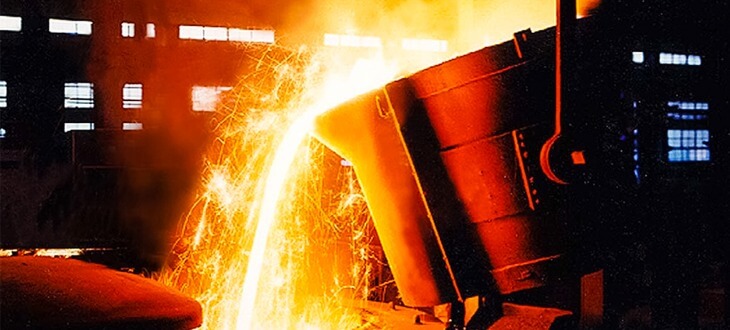Steel is a versatile material used in a wide variety of applications. Steel is strong, durable, and can be easily shaped. However, it has a melting point, which is the temperature at which it changes from a solid to a liquid.
Steel Melting Point
The melting point depends on the type of steel you’re using. Carbon steel, for example, has a melting point of around 2500 degrees Fahrenheit (or 1371 degrees Celsius). Stainless steel, on the other hand, has a melting point of around 2750 degrees Fahrenheit (or 1510 degrees Celsius).
The melting point of steel is important to know for many reasons. For example, it is important to know the melting point of steel if you are working with it in a forge or furnace. It is also important to know the melting point of steel if you are trying to weld it.
Factors That Affect the Melting Point of Steel
The melting point of steel is affected by several factors, including:
- The type of steel: The type of steel has the biggest impact on its melting point. Carbon steel has a lower melting point than stainless steel.
- The carbon content: The carbon content of steel also affects its melting point. Steel with a higher carbon content has a lower melting point than steel with a lower carbon content.
- The alloying elements: The alloying elements in steel can also affect its melting point. For example, steel with chromium has a higher melting point than steel without chromium.
- The heat treatment: The heat treatment of steel can also affect its melting point. Steel that has been heat treated to a high hardness will have a lower melting point than steel that has not been heat treated.
How to Determine the Melting Point of Steel
The melting point of steel can be determined by several methods, including:
Differential scanning calorimetry (DSC): DSC measures the heat flow during a phase change. Optical pyrometry: Optical pyrometry is a technique that measures the temperature of a material by measuring the intensity of its emitted light. Thermogravimetric analysis (TGA): TGA measures the weight loss of a material as it is heated. Additional Tips About Steel
- The melting point of steel is not a fixed value. The melting point of steel can vary depending on the type of steel, the carbon content, the alloying elements, and the heat treatment.
- The melting point of steel is not the only factor that affects its strength. The strength of steel is also affected by its microstructure, its hardness, and its toughness.
- The melting point of steel is important for many reasons. It is important if you are working with it in a forge, furnace, or trying to weld it.
Visit Tampa Steel & Supply for Quality Metal and Metal Processing Services
Do you need help with metalworking and keeping your metal fresh? The experienced professionals at Tampa Steel & Supply are here to help. We provide the highest quality of services to our customers.
Request a Quote Online
Or Call Tampa Steel & Supply at (813) 241-2801

